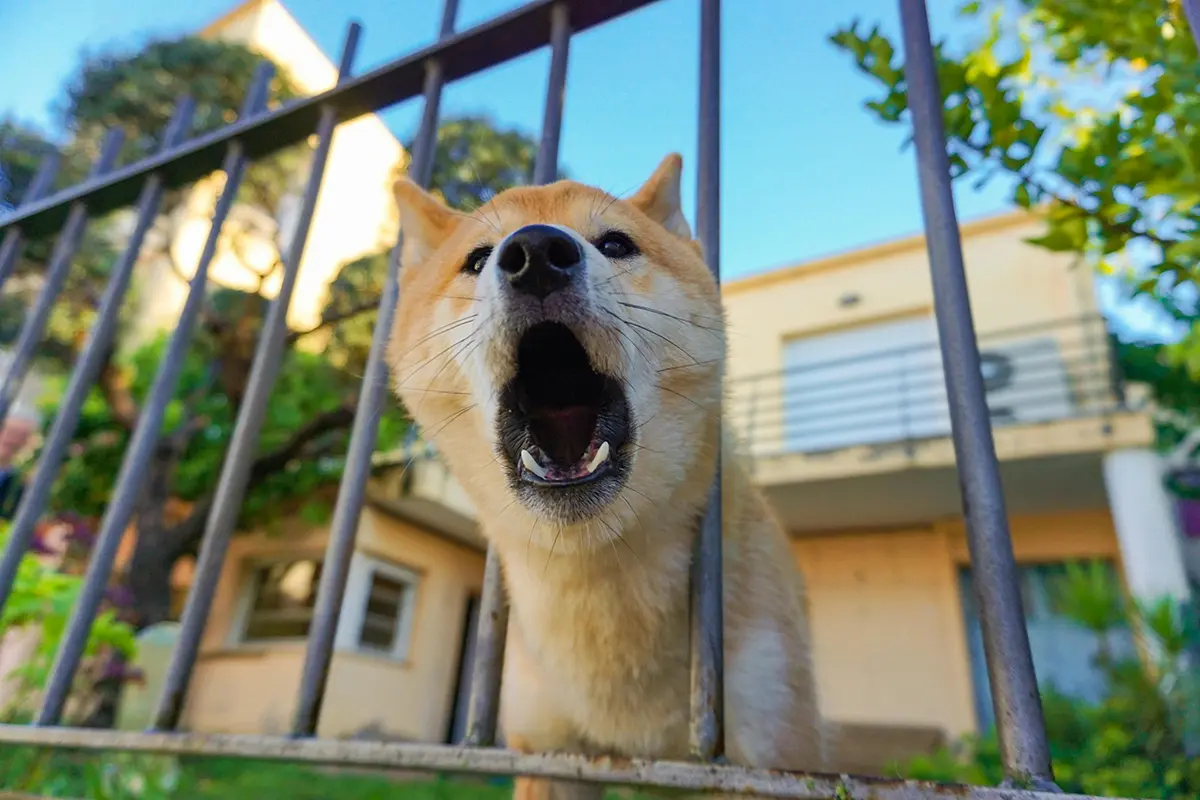Different types of barking warrant different strategies. Let’s look at three of the most common types of barking and the strategies for addressing each.
Demand Barking
The only thing you can do for a demand barker once they’ve started barking is ignore them. However, demand barking often falls into predictable patterns so we can be prepared to prevent it from happening. The goal with demand barking is to get ahead of it and prevent it, not react to it. Any reaction to demand barking, including saying Leave It or Shush, tends to reinforce and maintain this behavior.
Here’s what you can do to prevent demand barking
- Exercise your dog hard
- Send your dog to their Place
- Give a chew item that will last a long time
- Give your dog a puzzle toy to work on
Fear Barking
When the barking is a symptom of a negative emotional state, we want to change the emotion from negative to positive. Once we address emotions, we should see barking reduce. The result is a dog who can look at something, and then orient (quietly) back to you, a behavior that is incompatible with barking. And there is a genuine change in the emotions that were causing the barking in the first place. Your dog learns to relax or even enjoy the presence of the trigger because now it predicts Good Stuff for Dogs.
Engage/ Disengage
(this game assumes your dog knows Click=Treat but you can use any marker that is familiar to your dog)
- When your dog looks at a trigger and is calm, click
- They should whip their head back to you for a treat (give them one!)
- Repeat each time they look at the trigger
Alarm Barking
Alarm-style barking is the only time you can teach a “be quiet” cue.
To teach this we need to take advantage of a spontaneous outburst of barking but understand that the conditions for learning are not ideal. Your dog is in a heightened state of arousal when he is alarm barking. So, while this can be taught, it can be slow for your dog to learn.
- When they bark at something, Say “Enough” or “Shush”
- Place the food right at your dog’s nose so that you are touching it to their nostril
- When they smell the food, there will be a moment of silence. Mark the silence with “Yes” or a “click” and then pop the treat in their mouth
- If they resume barking, don’t worry, just repeat these steps
- After several incidents of barking and training like this, try extending the time you expect your dog to be quiet before marking (Yes or Click) and treating
- They bark, you say “Enough”, good job, good job, “Yes/Click” and give a treat
- Repeat this, gradually extending the number of “Good Jobs” you can say before the Mark and Treat
Additional Tips:
- Use a white noise machine or fan to try and drown out sounds that cause your dog to alarm bark
- Run the dishwasher or washing machine when you normally receive deliveries to mask sounds
- Play calming music for dogs, and sign up for free downloads from icalmpet.com This both masks sounds and helps dogs relax
- A tired dog is a quiet dog! Make sure your dog is getting enough physical and mental exercise
The app “Sound Proof Puppy” can be a big help in preventing dogs from becoming concerned about sounds in the first place
This article appears courtesy of DOG TRAINING BY VALERIE, Valerie Balwanz, CBCC-KA, CPDT-KA, PMCT
Valerie Balwanz is a behaviorist who generously shares her expertise with the CAF to help new pet owners. Visit her website for more information about training, and behavioral issues, and to contact her.

